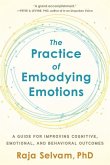Cognitive Hypnotherapy suggests that the solution to the problems people bring to counsellors and therapists lie within the problem itself. Rather than seek to attach labels to people's issues, Cognitive Hypnotherapists use the unique way each client connects to the world to help them create solutions specific to them from a range of interventions drawn from many different approaches. Over three books the author has developed this approach to create a compelling and comprehensive model of therapy. In his first, Wordweaving: The Science of Suggestion, the author describes a modern approach to the use of hypnotic language which uses the client's own words to lead them towards their desired outcome. It frees you from the need for scripts and shows how to create unique suggestions that fit each client's way of thinking. In this book, The Question is the Answer, the framework of Cognitive Hypnotherapy is described in detail, taking you from the first session with a client all the way through to a successful conclusion.It teaches you questions that lead you to the heart of both the client's problem and solution, and shows you how to use the answers to create compelling suggestions and guide your choice of intervention. In the third book, Cognitive Hypnotherapy: What's that about and How can I use it? Two simple questions for change, the author closes the circle by describing a theory of mind that explains why we do the things that limit our lives, and why we can take control and change ourselves. It then goes on to explain how, by weaving a comprehensive selection of interventions into a creative model that assists therapists in making the most appropriate choices. Taken together, these books provide a vibrant new direction for therapy.
Bitte wählen Sie Ihr Anliegen aus.
Rechnungen
Retourenschein anfordern
Bestellstatus
Storno







